Start with our Chatbot. If it can't help, you'll have the option to be connected with a Librarian.
In some cases, your professor or instructor will give you a topic. In others, you need to come up with your own. Here are some tips to get started:

Step 2 of the research process often involves finding an overview of a topic, checking facts and data, checking dates of significant events, or looking up definitions of specialized terms. Step 2 can also help you test your research question to see if it is too broad or to narrow.
Like the roots of a tree, background information is not always visible but it does play an important role in your research. While Google can be helpful in this regard, you may find some of the UC Merced Reference Databases useful for definitions and background information. Spending time on this step of the process can help give you valuable context that will help you with other steps like searching for research and writing about your topic.
Tip: Background information is often called "reference information" in libraries and library databases. Reference information is also called a "tertiary source."
Provides access to a collection of reference books including encyclopedias, dictionaries, measurement conversions and more. For Chrome browser users, follow this link to troubleshoot a known issue.
Access to 25 peer-reviewed, up-to-date encyclopedias spanning a variety of disciplines, including Social Work and Classics.
This reference collection of almost 900 titles includes books from 30 Sci-Tech publishers. The main subject areas include Engineering, Life Sciences & Chemistry, and Materials. All titles are available in full-text and are searchable. Additional features include interactive tables, equation plotters and graph digitizers.
CQ Researcher offers in-depth, unbiased coverage of a pressing political or social issue. Covers topics in health, international affairs, education, public policy, the environment, technology, and the U.S. economy.
Access to articles on current global issues in regards to business, economics, crime, politics and more. Updated monthly, with previous months archived.
An eBook collection from a variety of academic subject areas. View titles online. Login to use personalized tools such as the bookshelf and highlighting.
Full-text versions of scholarly journals and books from university presses and scholarly societies. Focused on the humanities and social sciences.
In addition to being a great place to start exploring an unfamiliar topic, Wikipedia is considered a tertiary source. Writers of tertiary sources synthesize information from secondary sources and strive to report them in a tone that is as unbiased and neutral as possible.
Some tertiary sources are cited in academic research and others are not. This practice varies by discipline so contact your instructor or a librarian with questions!
Wikipedia has a page on food sovereignty. Credo Reference found an entry from the International Encyclopedia of Human Geography on Food Security and Food Sovereignty.
But first, what's the difference between these reference sources?
Wikipedia |
Credo Reference |
|
| Source Type | Open-source, crowd-edited encyclopedia | Peer-reviewed academic reference |
| Authorship | Written and edited by volunteers; content can be edited by anyone (though some pages are monitored) | Written by subject-matter experts, typically academics or professionals in the field |
| Content Style |
Strengths:
Limitations:
|
Strengths:
Limitations:
|
What is considered background information  and whether to cite it can vary by discipline. If you're not sure what it is or where to find it, check out this YouTube video on primary, secondary, and tertiary sources from Suffolk County Library.
and whether to cite it can vary by discipline. If you're not sure what it is or where to find it, check out this YouTube video on primary, secondary, and tertiary sources from Suffolk County Library.
Are you citing background information in your research paper/project? You can always check with your instructor to see if that is acceptable for the assignment or within your discipline/major.

Copyright @ The Regents of the University of California. All rights reserved.
